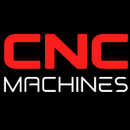Choosing the Best CNC Machine for Your Shop: A Comprehensive Buyer’s Guide

Choosing the Best CNC Machine for Your Shop: A Comprehensive Buyer’s Guide
In today’s competitive manufacturing landscape, selecting the right CNC machine can make or break your shop’s efficiency and profitability. From CNC mills that tackle intricate 3D contours to lathes that produce precise cylindrical parts, each machine type excels in different applications. This guide breaks down key machine types, criteria to consider when choosing, real-world application examples, and a case study illustrating the importance of a well-chosen CNC investment.
1. Understanding Key CNC Machine Types
A. CNC Mills
Function: CNC milling machines use rotating cutting tools to remove material from a workpiece. They typically have a table, a spindle, and multiple axes (3, 4, or 5) for complex contours.
- Typical Materials: Aluminum, steel, titanium, plastics, composites.
- Applications: Aerospace components, automotive parts, molds, and precision tooling.
- Advantages: Versatile for complex geometries; multi-axis configurations reduce setups and achieve tight tolerances.
B. CNC Lathes
Function: Lathes rotate cylindrical workpieces while stationary cutting tools shape the exterior (and sometimes the interior) of the part.
- Typical Materials: Steels, aluminum, brass, plastics.
- Applications: Shafts, fasteners, threaded components, couplings.
- Advantages: Ideal for high-precision round parts, offering faster cycle times for turned parts compared to mills.
C. CNC Routers
Function: Routers typically operate on large, flat tables, moving either the tool or the workpiece (or both) along multiple axes. They excel at cutting, shaping, and carving sheet materials.
- Typical Materials: Wood, plastics, soft metals, foam.
- Applications: Sign making, cabinet parts, furniture components, packaging prototypes.
- Advantages: Large working area, relatively high feed rates, and cost-effective for high-volume flat material processing.
D. EDM (Electrical Discharge Machining)
Function: EDM removes material by generating sparks between an electrode and the workpiece submerged in a dielectric fluid. This non-contact process works well on very hard or delicate materials.
- Typical Materials: Hardened tool steel, tungsten carbide, titanium, exotic alloys.
- Applications: Injection molds, dies, medical implants, aerospace components requiring fine details.
- Advantages: Extremely precise and can handle complex shapes or deep cavities unachievable by traditional cutting tools.
2. Primary Selection Criteria
1. Budget and Total Cost of Ownership
- Initial Purchase Price: Consider the budget for multi-axis capabilities or large working envelopes.
- Maintenance & Upgrades: Include service contracts, replacement parts, tooling, and software in your calculations.
- Return on Investment (ROI): Assess projected workload and potential cost savings from faster throughput or reduced labor.
2. Materials and Cutting Requirements
- Hard Materials (Steel, Titanium): Require more robust machines with specialized solutions.
- Soft Metals/Plastics: Ensure machines minimize vibration for accuracy.
- Wood & Composites: Large-format routers provide speed and capacity for broad sheets or shapes.
3. Complexity and Tolerances
- Multi-Axis Machining: Essential for intricate 3D parts, enabling reduced setups and high tolerances.
- Simple Turning/Drilling: A lathe or 3-axis mill may suffice for simpler tasks.
4. Production Volume
- High-Volume Runs: Look for automatic tool changers or pallet changers to minimize downtime.
- Prototyping/Low-Volume: Consider a flexible multi-purpose machine for diverse, smaller batch jobs.
5. Space and Infrastructure
- Machine Footprint: Evaluate floor space and accessibility for efficient operation.
- Electrical & Coolant Requirements: Heavier machines may require more robust infrastructure.
3. Real-World Application Examples
Example 1: Automotive Part Production
Machine Type: 4-axis CNC mill.
Why: Complex aluminum engine brackets require angled drilling and milling.
Result: Simplifies setups, reduces tooling costs, and ensures accuracy for just-in-time supply chains.
Example 2: Custom Furniture and Signage
Machine Type: CNC router.
Why: Ideal for cutting detailed wood or plastic patterns.
Result: Enables mass production with minimal labor in small businesses.
Example 3: Aerospace Tooling
Machine Type: EDM.
Why: Essential for cutting high-strength alloys with precision.
Result: Achieves tight tolerances needed for aerospace components.
Case Study: Coastal Precision’s Leap into 5-Axis Machining
Company Overview: Coastal Precision, a mid-sized job shop, served marine and defense clients primarily with 3-axis machining.
Challenge
Faced with requests for complex angled parts, Coastal Precision struggled with efficiency and outsourcing costs.
Solution
A new 5-axis CNC milling center enabled the shop to:
- Cut stainless steel and titanium with a high-torque spindle.
- Simplify positioning and programming with integrated trunnion tables.
- Streamline production with advanced CAM software.
Results
- 30% Faster Cycle Times: Reduced setups and production times for complex parts.
- New Client Contracts: Attracted aerospace and defense customers.
- ROI in Under 18 Months: Enhanced production and business expansion.
Top CNC Machine Brands to Consider
- HAAS Automation: User-friendly controls and cost-effectiveness.
- Mazak: Wide-ranging solutions and automation.
- DMG MORI: High-precision 5-axis and multitasking machines.
- Okuma: Known for durability and proprietary control systems.
- Makino: Premium EDM and milling solutions.
- Hurco: User-friendly for quick setups.
- Doosan: Strong in turning centers and VMCs.
- Fanuc: Robust Robodrill small machining centers.
Conclusion
Choosing the best CNC machine involves matching your needs in terms of parts’ complexity, material requirements, production volume, and budget. As illustrated in the case of Coastal Precision, investing in the right CNC equipment not only accommodates current workloads but also opens doors to business growth and higher-value opportunities.


